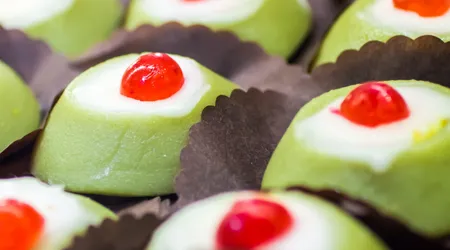Sicilian Cassata: How to Make It

Sicilian Cassata, a name that evokes the colors, scents and rich history of Sicily.
Announcements
This iconic dessert, a symbol of celebration and conviviality, is not just a cake, but a tale of intertwined cultures.
Prepare a Sicilian cassata At home, it means immersing yourself in an ancient art, where each layer tells a piece of history.
From Arab rule to Palermo's Baroque, this dessert is a bridge between eras. In this article, we'll explore how to create a Sicilian cassata authentic, with modern techniques and practical advice, without losing the soul of tradition.
Are you ready to discover how to transform simple ingredients into a masterpiece?
Announcements
The Story of a Millennial Dessert
The origins of the Sicilian cassata They date back to the 9th century, during the Arab domination of Sicily. The Arabs introduced sugar cane and almonds, the dessert's key ingredients.
The term “cassata” probably derives from the Arabic qas'at, meaning “basin.” Initially, it was a baked dessert.
The modern version, with marzipan and icing, developed in the 19th century. According to Italian Cuisine (2023), the Sicilian cassata it was codified in 1873 by the pastry chef Salvatore Gulì.
This evolution reflects the meeting of cultures: Arab, Norman, and Spanish. Marzipan, invented in the Martorana convent, added elegance.
++ Panna cotta with berry sauce
There Sicilian cassata It became the Easter dessert par excellence, but today it is loved all year round.
Each Sicilian region has its own unique variation. Palermo favors baroque decorations, while Syracuse omits the icing.
There Sicilian cassata it is a traditional agri-food heritage (PAT), recognized by the Ministry of Agricultural Policies.

Ingredients: The Heart of Tradition
Prepare a Sicilian cassata It requires fresh, quality ingredients. Sheep's ricotta is the star, preferably artisanal.
The sponge cake should be soft, the marzipan bright green. Candied fruit, such as orange and cherries, add color.
| Ingredient | Amount | Notes |
|---|---|---|
| Sheep's milk ricotta | 1 kg | Fresh, well drained |
| Sponge cake | 1 base (ø 26 cm) | Homemade or quality |
| Marzipan | 300 g | Colored with pistachio paste |
| Powdered sugar | 570 g | For cream and icing |
| Chocolate chips | 120 g | Dark, quality |
| Candied fruit | 80 g | Orange, cherries, citron |
| Maraschino | 100 g | For the syrup |
Choosing the right ricotta is crucial: it should be creamy, not watery. Artisanal candied fruit guarantees authentic flavor. Avoid commercial products for a genuine taste.
See also: Zabaglione: traditional Italian cream
Step-by-Step Preparation
Create a Sicilian cassata It requires organization. Start the day before, letting the ricotta drain for 12 hours. Prepare the sponge cake and ricotta cream ahead of time.
- Sponge cakeBeat 5 eggs with 220 g of sugar, add 110 g of flour and 110 g of starch. Bake at 180°C for 45 minutes.
- Ricotta creamSift the ricotta, mix with 350 g of powdered sugar, add the chocolate chips and candied fruit. Refrigerate.
- AssemblyLine a flared cake pan with sponge cake and marzipan trapezoid shapes. Pour in the cream and cover with more sponge cake.
- DecorationTurn the cake upside down and glaze with 400g of powdered sugar and 80g of water. Decorate with candied fruit and royal icing.
Practical example: for a perfect sponge cake, use room temperature eggs. The icing should be smooth but not too runny, like a veil of silk.
Another trick is to carefully alternate the trapezoids, creating a mosaic effect. Let the cake rest in the refrigerator for at least 4 hours, preferably overnight, to consolidate the flavors.
Secrets to a Perfect Cassata
There Sicilian cassata It requires patience and care. Use a 26 cm flared cake pan, typical of Palermo.
Dust with powdered sugar to prevent sticking. The maraschino syrup adds moisture without weighing it down.
A common mistake is using cow's milk ricotta, which lacks character. Choose soft, not chewy, candied fruit. The glaze must harden quickly for a glossy finish.
For the less experienced, make marzipan at home with chopped almonds, sugar and egg white.
Example: Mix 200g of almond flour with 200g of sugar, add 1 egg white, and mix until smooth.
Finally, don't skimp on the decoration. Sicilian cassata It's a work of art: candied fruit arranged like jewels, royal icing for fine details. It's like painting a baroque painting.
Modern Variants and Innovations
In addition to the classic version, there are fascinating variations. Baked cassata, typical of the Palermo area, uses shortcrust pastry and omits the marzipan.
Cassata catanese is a baked cake, similar to a tart.
In 2025, Sicilian pastry chefs experiment with lighter versions.
Some replace the icing with white chocolate, others use buffalo ricotta for a more delicate flavor.
A statistic of Red Shrimp (2024) reveals that 65% of Sicilians prefer traditional cassata at Easter.
Cassatine mignon, elegant single-serving treats, are perfect for events. Innovations like the addition of chopped pistachios or orange blossom water keep the tradition alive without distorting it.
For example, in Messina, cassata is less sweet, with more candied fruit. In Trapani, cinnamon is added for a spicy touch. These variations enrich the Sicilian confectionery heritage.
Why Cassata is a Symbol
There Sicilian cassata It's not just a dessert, but a symbol of identity. It represents Sicily's cultural stratification: Arab, Norman, and Spanish. Every bite is a journey through time.
Why not try making it at home?
It's a gesture of love towards tradition. Its preparation unites families, like a ritual. In 2025, the Sicilian cassata remains a global icon, loved by tourists and locals alike.
Serve it at the end of a meal or as a snack, perhaps with a passito di Pantelleria. It's a sensory experience that speaks of Sicilian history, art, and passion.

Storage and Serving Tips
Once ready, store the Sicilian cassata Refrigerate for up to 5 days. Cover with plastic wrap to prevent it from absorbing odors. Serve at room temperature to enhance the flavors.
For impeccable service, use a sharp, clean knife for perfect slices. Pair it with a sweet wine or a strong espresso.
Presentation is everything: a white plate enhances the bright colors.
If you have any leftovers, freeze individual portions wrapped in plastic wrap. Thaw in the refrigerator to maintain the consistency. Avoid microwaves to avoid altering the frosting.
Conclusion: A Dessert that Unites
There Sicilian cassata It's more than a dessert: it's a cultural legacy, an explosion of flavors, a work of art. Preparing it is an act of creativity and respect for history.
In 2025, it continues to enchant palates around the world, combining tradition and innovation. Whether you're an expert or a beginner, Sicilian cassata invites you to celebrate Sicily.
Grab the ingredients, turn on the oven, and let your passion guide you. The result will be a dessert that tells a thousand-year-old story.
Frequently Asked Questions
1. Can I use cow's milk ricotta instead of sheep's milk ricotta?
No, sheep's milk ricotta is essential for the authentic flavor. Cow's milk ricotta is too delicate.
2. How long does it take to prepare a Sicilian cassata?
About 2 days, considering the resting times of the ricotta and the cake.
3. Can I freeze Sicilian cassata?
Yes, in individual portions, wrapped in plastic wrap. Defrost in the refrigerator to maintain its consistency.
4. Where can I find a flared cake pan?
In baking supply stores or online, look for a 26cm “cassata mold.”
